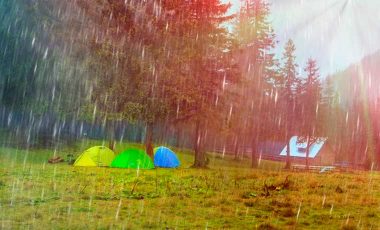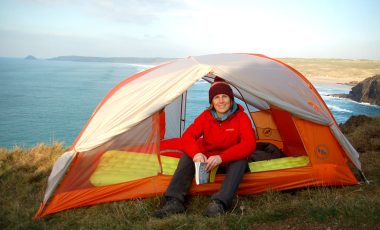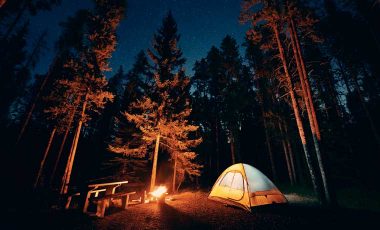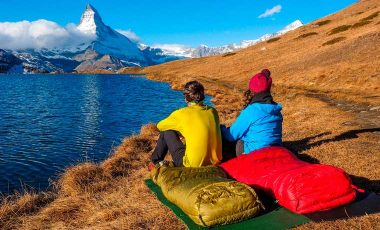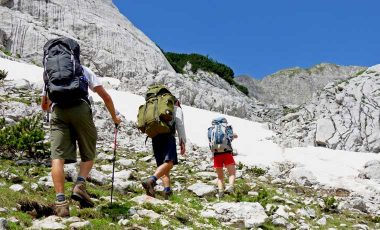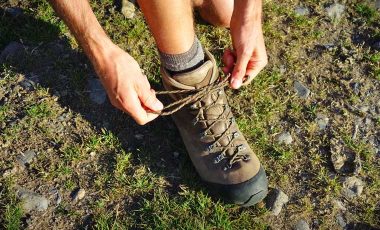Breaking in hiking boots starts before you even buy them. With almost all modern brands claiming out of box comfort, the question is, why is there a need to know how to break in hiking boots at all?
Why, indeed!
Well, firstly, not all boots do what they claim they will. Secondly, everyone’s feet are different. What feels instantly luxurious to one person may be more like walking on hot coals to the next — unless that’s your kinda thing?!
How to break in hiking boots
From choosing the right boots to enjoying miles of comfortable hiking in them, our top tips will help you get comfortable in your boots in no time.
01Know your feet
Before you even start trying on hiking boots, it will help the whole process if you have a good idea of what your feet are like. Ask yourself the following questions:
- Are your feet especially wide or narrow?
- Do you have a high instep (arch)?
- Are your feet flat?
- Do you have bunions?
- Are your feet different sizes to each other?
- Have you had issues with breaking in boots before? If so, what were they?
Once you have an idea about what your feet are like, you can seek out the right kind of boots for your feet. There’s no point getting narrow boots if you have wide feet or bunions.
02Buy the right boots!
Probably the most important step towards comfortable hiking boots is the buying process. Hopefully you can identify any stand out features about your feet as this will help when choosing the right boots. Be sure to keep this information in mind when choosing boots to try on.
Understanding how to fit your boots will also help you get the right pair for you. If you take your time over the choosing, fitting and buying process, you may not need to break your boots in at all.
03Wear them with your hiking socks
Be sure to try on your boots with the socks that you’ll be wearing when you go hiking. The boots may feel great with thin cotton socks. But thicker socks for hiking might change everything. In the ideal world you should try to avoid wearing multiple pairs of socks. One pair should be just fine, providing you have chosen boots that fit well and are comfortable.
04Walk around the house
Even if your boots deliver that ‘out of box comfort’ that they promise, it’s still important to wear them before you head out on a 10-miler! Wearing the boots for a couple of minutes in the shop is very different to hiking in them for hours at a time. Wear them round the house as much as you can when you first get them. Include stairs (up and down), and stand around in them, too. Doing this will help you solidify your love for your new partners in hiking. Or it may highlight discomfort.
05Identify any discomfort
If you start to feel uncomfortable in your boots after wearing them around the house for a few hours, you’ll need to take action. You may need to return them and try a different boot altogether. But before you do, try to identify the discomfort:
06Get out around the block
If you’ve managed to troubleshoot any discomfort by changing socks, adjusting your laces or adding insoles, then you should be all set to get out and about in your new boots. However, as tempting as it may be to hit the trail for your first outing, it’s a good idea to just stick close to home to start with. Doing this means you can easily make any adjustments or sock changes that you might need. Plus, if your feet start to become uncomfortable you don’t have miles of painful trekking before you can give them a break.
Do this a few times before you get out on the trail properly.
07Take a hike!
You’ve nailed your lacing techniques, your socks are feeling peachy and you’re totally happy walking in your new boots to the store and back. Now it’s time to take a hike! However, just because you’ve done everything you should have to break in your hiking boots, doesn’t mean they won’t give you grief on your first hike. So be sure to take a blister kit and some spare socks. And expect some discomfort. Take your time lacing your boots, and don’t be afraid to re-lace them at the first sign of discomfort.
Breaking in hiking boots doesn’t need to be a painful process. And if you take your time to buy the right boots in the first place then you shouldn’t need to do much breaking in at all.





